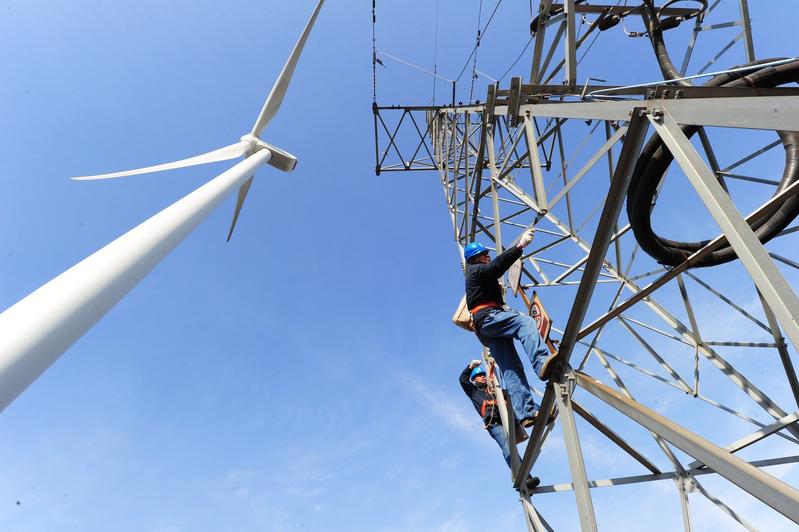 In this undated file photo, two State Grid technicians check power transmission facilities in Chuzhou, Anhui province. (SONG WEIXING / CHINA DAILY)
In this undated file photo, two State Grid technicians check power transmission facilities in Chuzhou, Anhui province. (SONG WEIXING / CHINA DAILY)
The world's longest and most-powerful ultra-high voltage power line, which stretches from China's far northwest to the heavily populated east, has transmitted more than 50 billion kilowatt hours since starting operations last September.
According to State Grid, the Changji-Guquan line also promotes the development of the Xinjiang Uygur autonomous region, which is rich in coal, wind power and solar power
According to State-owned State Grid Corp of China, the line's operator and the world's largest power company, the Changji-Guquan ultra high voltage direct current - UHVDC - link covers the world's longest transmission distance with the biggest capacity.
Also known as the Zhundong-Wannan transmission line, it traverses a distance of 3,324 kilometers and is capable of transmitting up to 12 GW of electricity.
Analysts said the implementation of renewable energy projects tends to get hampered by challenges like paucity of adequate power where it is needed most.
So, the UHVDC technology has an advantage as it would allow for clean power to be quickly distributed over very long distances.
ALSO READ: China to build first ultra high-voltage clean power line
Wei Hanyang, a power market analyst at Bloomberg New Energy, said he believes the 1,100kV DC transmission line has ensured energy security in the most populated areas in eastern parts of China by delivering electricity generated in the less-populated northwestern region of China.
"It has achieved a utilization rate over 75 percent, the best utilized UHV during the past one year except those lines with hydropower base whose output is often more predictable. It also outperforms the average utilization of direct-current lines in State Grid territory, which stood at 56 percent last year," he said.
"Considering the large capacity of delivery over a long distance, this line has created a new milestone in China's UHV history."
ALSO READ: State Grid Corp makes major strides in clean power
Construction on the transmission project started in January 2016 and was completed in December 2018, said State Grid.
According to Wei, the transmission line has not just strengthened the outbound delivery capacity of Xinjiang Power Grid, but also helped lower the curtailment rate of wind to 13.1 percent and solar to 3.5 percent during the second quarter of this year - both are 8 percent lower than the same period in 2019.
"This has also marked a good performance of Xinjiang in terms of renewables curtailment in history. In the future, with more routes provided to feed the Changji-Guquan line, we expect an even better utilization," he said.
According to State Grid, the Changji-Guquan line also promotes the development of the Xinjiang Uygur autonomous region, which is rich in coal, wind power and solar power.
ALSO READ: State Grid to further efforts in smart charging network for EV drivers
The region has seen four transmission lines since 2010 and transmitted over 71.24 TWh of electricity to the Chinese national grid in 2019. It has been key to reduction in distribution and transmission losses.


